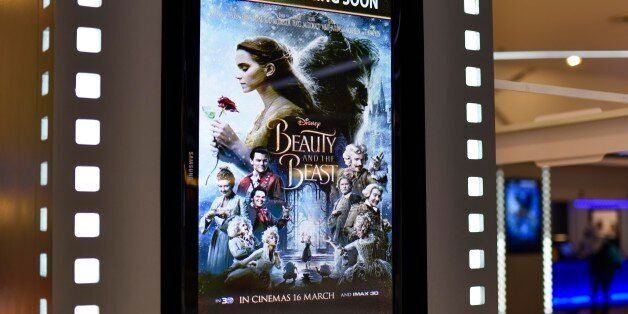
There are two love stories in the new live-action Disney film Beauty and the Beast, out on cinema this week. One is the love story between the Beast and Belle and the other is between the Beast and the audience. The latter struggles to emerge in the remake of the 1991 animated music fairy tale. The problem is, there is no beast, no ugly creature to fall in love with, nothing there to challenge our approach to physical appearance. And this is an evidence for society's continuing discomfort with looking different.
Director Bill Condon said in a trailer launch interview that the film works as a reminder that we shouldn't be distracted by surface beauty. One could argue that this is not the message that comes across. Any visual aspect departing from social expectations has been erased, even where you would have mostly expected to find it. Everything and everyone is beautified, including the beast, which looks like a handsome human-like being who, maybe, needs a shave. What makes him socially acceptable and conventionally good looking is that we can clearly recognise his physical features and categorise them as familiar.
The animated 1991 Disney beast resembled the Greek mythological creature the Minotaur, half bull half man. He featured short horns pointing up, a large nose, a protruding lower lip and lower canines that always stuck out; they did not recede even in the most romantic moments. Conversely, the 21st century Disney beast has a proportioned body and symmetrical human facial features: regular eyebrows and cheekbones, proportioned and plump lips, and occasionally you get to see its upper small canines. His plastic beauty is evident in the scene when he lies after being bitten by wolves, while trying to save Belle.
The monstrosity of the 2017 Disney beast is never shown. We deduce it from the reactions of those who encounter him: the wide open eyes of Belle's father, the horse running away from the castle where the beast resides; the expressions of disbelief of the village people; the inquiring, although not scared, eyes of Belle. In terms of fictional media representation of what can be cast as the 'other', when we look at the 2017 beast we can say that we have moved backwards towards excluding portrayals of what might upset the eyes.
We don't necessarily expect Disney to reform minds. The producers must have their commercial and artistic motifs to make the characters as they are. The beast images must be fit to appear on mugs, baby pyjamas, cushions, swim suit, peluches and underwear. However, the representation of the Beast as a beautiful creature has drawbacks even from a narrative viewpoint. There has been frequent critique of the anticlimactic evolution of the plot where at the end the prince is much less fascinating and interesting than the beast. This is a problem inherent to this type of story - it's not Disney's fault - yet it could have been tackled by making the beast a little bit less cool.
Also, Belle needs to come to terms with being attracted to a monster. If she does not face this cognitive challenge, if the person she falls in love with is too familiar and conventional, then she does not have a crisis. Therefore, she misses the possibility of emancipation from stereotypical ideas of acceptable and her intellectual freedom.
Probably, Beauty and the Beast is a story whose complexity and richness can better be attained by the written word. Maybe the audience is not ready for an encounter with the Beast - the real, visually unacceptable beast. Despite showing an effort to embrace diversity by portraying homosexuality and including interracial couples, the multinational entertainment conglomerate did not take the risk of seriously tackling one of the other most enduring and difficult-to-eradicate social problems: the stigmatisation of non-conforming physical characteristics.
An opportunity to start tackling this issue will be the first ever national Face Equality Day in the UK on 26 May organised by the charity Changing Faces and supported by the University of Westminster. The Day will raise awareness of our unconscious beliefs about bodily disfigurement that can result in prejudice and discrimination.
